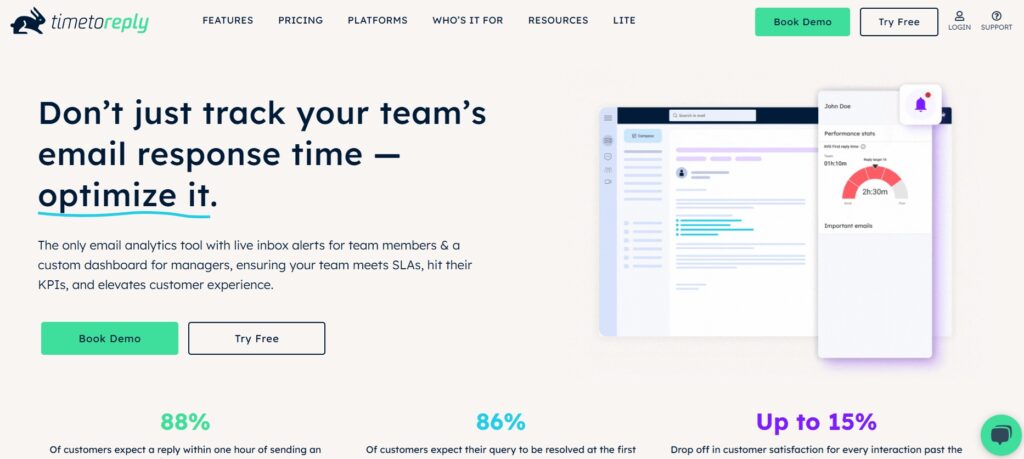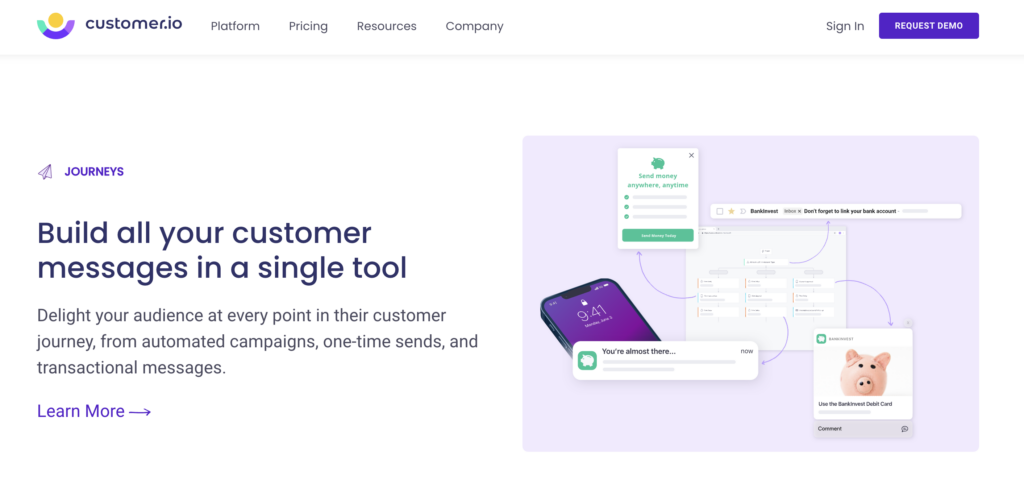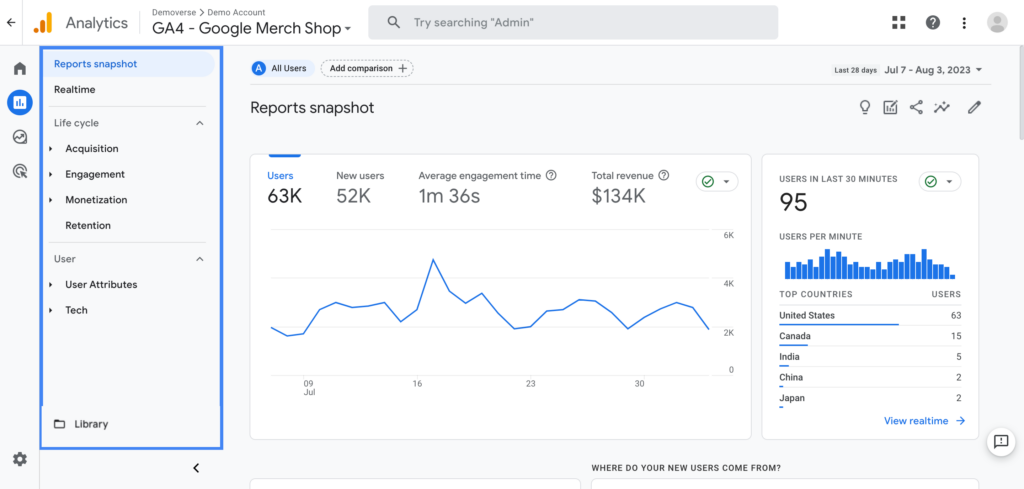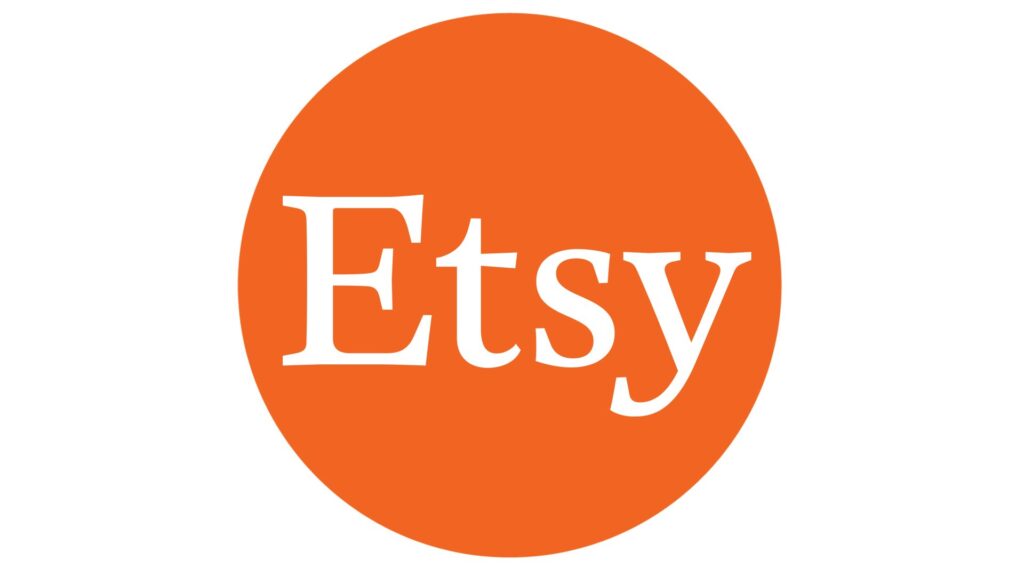Email marketing remains a cornerstone of digital communication, but to harness its full potential, businesses must delve into email marketing data analysis.
To be competitive in today’s digital marketing age, you must embrace the magic of email marketing data analysis. There is no need for a PhD in math; just a sprinkle of curiosity and a dash of creativity will do!
Email marketing analytics is not just about tracking opens and clicks; it’s about extracting meaningful insights to refine your strategies.
By diving deep into the data generated by your email campaigns, you can gain a nuanced understanding of your audience’s preferences, behaviors, and engagement patterns.
Go on a journey with us as we explore the significance of email marketing data analysis, unravel the complexities of email marketing analytics, and highlight email analytics tools and email marketing trends that can elevate your campaigns and improve your marketing ROI.
Gone are the days of generic email blasts.
Today, email marketing plays a pivotal role in the sales process. Smart email marketers leverage personalized content and targeted email marketing campaigns to forge meaningful connections and boost sales.
Email marketing isn’t merely about sending messages but creating a journey.
From lead generation to post-purchase engagement, each email serves as a guide through the sales funnel.
Also Read:
Think of email metrics and KPIs like your marketing guide in 2025. Email marketing data analysis is not just about counting opens and clicks anymore. We’re diving into a world where we understand how users behave, how well personalization works, and if our message really clicks with our audience.
These email metrics are like a compass, helping us navigate the maze of data. They guide us through customer journeys, helping us tweak our strategies for the biggest impact.
And in 2025, it’s not just about numbers – predictive analytics takes the lead, letting businesses predict customer actions and fine-tune campaigns with super precision.
Here’s what email marketing data analysis can do for your sales team in 2025:
Let’s go beyond open rates to gain more insights into how our emails really perform.
We all know the basics of open rates and click-through rates, but have you considered the following:
Cadence analysis: Leverage email marketing data analysis to evaluate the frequency and timing of your email campaigns. Assess how the cadence impacts engagement and conversion rates. Experiment with different sending frequencies and schedules to find the optimal cadence that maximizes audience interaction without causing fatigue.
Customer journey mapping: Map out the customer journey based on email interactions. Perform thorough email marketing data analysis to understand how different touchpoints contribute to the overall customer experience. Analyze the effectiveness of emails at each stage of the journey and identify opportunities for personalized and targeted content to guide users through the sales funnel.
Personalization effectiveness: Go beyond personalization tokens and analyze the effectiveness of dynamic content and personalized recommendations. Measure how well your emails resonate with individual preferences and behaviors. Utilize A/B testing to refine personalization strategies and enhance overall campaign performance.
Time to reply: If your email campaigns are part of a sales strategy, consider the time it takes for sales staff to respond to leads generated through emails. Measure the effectiveness of follow-up responses in converting leads into customers. Timely lead responses contribute significantly to lead nurturing and conversion rates.
Check out our thorough lead response tools comparison for customer-facing and sales teams.
Also Read:
Define clear objectives: Before diving into email marketing data analysis, establish clear objectives for your email campaigns. Whether it’s increasing engagement, driving conversions, or improving customer retention, having well-defined goals helps focus your email marketing data analysis on the email metrics that truly matter.
Segmentation for precision: Utilize segmentation to break down your audience into meaningful groups. Conducting email marketing data analysis at a segmented level provides more nuanced insights into how different demographics or behaviors respond to your campaigns. This precision allows for tailored marketing strategies that resonate with specific audience segments.
Customer journey mapping: Map out the customer journey based on email interactions. Understand how recipients move through the sales funnel and identify touchpoints contributing most to conversions. Analyzing the customer journey helps optimize email content for each stage, enhancing overall campaign effectiveness.
Personalization and A/B testing: Assess the impact of personalization by analyzing how personalized email content performs compared to generic messaging. Implement A/B testing to experiment with different elements such as subject lines, visuals, and calls-to-action. The results from your email marketing data analysis guide you in refining your email content for maximum engagement.
Time and cadence optimization: Investigate the optimal times and frequencies for sending emails by analyzing engagement patterns over time. Timing is crucial, and email marketing data analysis can uncover the windows when your audience is most receptive. Adjusting the cadence based on this email marketing data analysis can prevent email fatigue and enhance overall campaign performance.
Conversion path analysis: When you track the path from email engagement to conversion you can identify the specific actions that lead to desired outcomes, whether it’s making a purchase, signing up for a webinar, or downloading content. Analyzing the conversion path helps streamline campaigns and emphasizes the elements contributing most to success.
Also Read:
To get valuable insights and make your email marketing campaigns more successful use email marketing analytics tools. Trust us, they will simplify your life by taking the guesswork out of marketing.
timetoreply: timetoreply Ignite is an email marketing data analysis tool that specializes in tracking and optimizing response times. timetoreply Ignite helps sales teams analyze and enhance their email engagement metrics to close more deals.

Mailchimp: Mailchimp is renowned for its user-friendly A/B testing capabilities. It allows users to experiment with elements, such as subject lines, content, and send times. By analyzing the results, sales teams can refine their email content and personalize messages for maximum impact.

Customer.io: Customer.io is an email marketing data analysis platform focusing on customer-centric email campaigns. It allows businesses to map and analyze the customer journey. By understanding how users interact with emails at various touchpoints, sales teams can tailor their communication strategies to guide leads seamlessly through the sales funnel.

Segment: True to its name, Segment is a powerful tool for audience segmentation. It integrates with various email marketing data analysis sources, including email platforms, enabling precise segmentation based on user behavior. Sales teams can utilize this data to craft targeted messages that resonate with specific segments, increasing the relevance of their outreach.

Google Analytics: While not solely an email analytics platform, Google Analytics offers robust conversion tracking capabilities. Businesses can analyze how email interactions contribute to the overall conversion path by setting up goals and tracking conversions. This email marketing data analysis provides valuable insights into the effectiveness of email campaigns in driving desired actions.

Also Read:
While the human mind is incredibly powerful, email marketing data analysis software can process large datasets quickly, identify patterns, and provide valuable insights into engagement, customer behavior and email marketing trends.
Email marketing data analysis software, including timetoreply, enhances decision-making by presenting response data through easy-to-interpret graphs.
These visualizations enable easy identification of patterns and areas for improvement. With this user-friendly approach, teams can optimize workflows and resource allocation, ultimately enhancing sales strategies.
Here are some additional ways email marketing data analysis software improves sales strategies:
Elevate your email marketing data analysis game with advanced predictive analytics and machine learning techniques. These cutting-edge approaches unlock deeper insights into customer behaviors, allowing for more accurate predictions and proactive campaign adjustments.
Leverage cohort analysis to gain a granular understanding of how specific groups of users interact with your email campaigns over time. This advanced technique enables marketers to identify patterns, optimize targeting, and tailor content strategies for distinct segments, enhancing overall campaign effectiveness.
Dive deep into email marketing engagement metrics, focusing on user interactions beyond opens and clicks.
Analyze time spent on emails, interaction with embedded content and social media sharing to gauge the true impact of your campaigns and inform content optimization strategies.
Implement a robust tagging system to categorize and organize email data effectively. Labelling campaigns, segments, and user behaviors create a structured framework that streamlines email marketing data analysis, making extracting actionable insights and identifying trends over time easier.
Watching reply times in real-time helps you adjust communication strategies on the spot, finding and fixing any delays in the response process. This not only makes customers happier but also improves conversion rates.
Also Read:
Let’s delve into two compelling case studies that illuminate the power of successful email marketing strategies in sales, exemplified by industry leaders Amazon and Etsy.
Case studies: Successful email strategies in sales

Strategy: Amazon leverages customer data to create highly personalized and targeted email campaigns. Amazon sends personalized recommendations that resonate with individual customers by analyzing purchase history, browsing behavior, and preferences.
Impact: This strategy significantly boosts customer engagement and conversion rates. Amazon’s emails feel tailored to each recipient, creating a sense of relevance and enhancing the overall customer experience. By effectively using data to predict customer needs, Amazon maximizes the impact of its email campaigns.
Etsy: Behavioral triggers for abandoned carts

Strategy: Etsy employs behavioral triggers to target users who abandon shopping carts. When a user leaves items in their cart without completing the purchase, Etsy sends a strategically timed email reminder, often accompanied by a discount incentive or limited-time offer.
Impact: This strategy effectively recaptures potential lost sales by addressing a specific user action. The timely and relevant reminder encourages users to revisit their carts and complete the purchase. Etsy’s use of behavioral triggers showcases the power of understanding customer actions and responding with personalized, targeted communication.
These examples highlight the effectiveness of leveraging data-driven insights and personalized approaches to drive email marketing engagement, conversions, and sales.
Data-driven email strategies: crafting compelling email marketing campaigns
Crafting compelling email marketing campaigns starts with data-driven email strategies, where meticulous analysis of customer behaviors and preferences guides the creation of highly targeted and engaging content.
Using data to understand your audience and customize messages ensures that every email connects with recipients, building stronger relationships and boosting the chance of conversion.
Successful data-driven email strategies go beyond generic campaigns, letting businesses send personalized content that meets individual needs. This approach increases engagement and maximizes the impact of each communication.
Improving how you connect through emails is crucial for businesses. It builds stronger bonds with customers, boosts conversions and sales, and helps you stand out in the market.
Plus, it saves money, helps you make smart decisions based on email marketing data analysis, and makes your brand more visible for long-term success in the fast-paced digital world.
Now, enter timetoreply – it’s like your email superhero. With powerful features like real-time alerts, coaching tips, and Gmail email performance tracking, it keeps your sales team on top of their email game. They send out smarter and quicker emails, boosting your engagement.
Don’t wait till the end of the month to check your email stats. timetoreply’s real-time tracking gives you instant insights.
Also Read:
Email marketing data analysis is a game-changer for businesses. It’s like having a secret weapon to increase customer engagement and score more conversions.
Companies can fine-tune their strategies by tapping into the insights from email data analysis.
It’s all about being super-targeted and effective in reaching and converting potential customers.
Segmentation and personalization: Implementing segmentation based on customer behavior and demographics allows for highly personalized email campaigns, improving relevance and engagement.
A/B testing: Regularly conduct A/B testing on subject lines, content, and visuals to identify the most effective components and refine future email campaigns.
Behavioral triggers: Use behavioral triggers to automatically send targeted emails based on customer actions, nurturing leads and guiding them through the sales funnel.
Real-time tracking and alerts: Leverage timetoreply’s real-time tracking and alerts to promptly monitor lead responses, ensuring timely email follow-ups and maximizing sales opportunities.
Coaching prompts: Utilize timetoreply’s coaching prompts to automatically notify sales reps of quick, simple improvements they can make to send faster and smarter emails, enhancing overall communication strategies.
Data collection strategies: Employ effective data collection strategies to gather relevant customer information, ensuring a comprehensive understanding of your audience for personalized email communication.
Integration of tools: Integrate email analytics tools with your email platform to streamline data collection and email marketing data analysis, providing a unified view of customer interactions across various channels.
Customer feedback and surveys: Actively seek customer feedback through surveys to understand preferences and expectations, incorporating this valuable information into email campaigns for improved resonance.
Predictive analytics: Implement predictive analytics to forecast customer behavior, enabling proactive adjustments to email strategies and enhancing overall campaign effectiveness.
Embracing future trends in email marketing involves a commitment to continuous improvement as businesses navigate evolving consumer behaviors, emerging technologies, and the dynamic landscape of digital communication.
To remain at the forefront of email marketing, companies should prioritize continuous learning and training for their marketing teams.
Participating in industry conferences is another essential practice to ensure staying informed about emerging trends.
The effective use of marketing technology and automation tools is crucial for adapting to the evolving landscape.
To survive, you must adopt an agile mindset, embracing flexibility, adaptability, and a willingness to innovate in changing circumstances.
Set benchmarks to measure progress, track email performance, and guide continuous improvement efforts.
Keep a watch on industry leaders to stay informed about the latest trends, strategies, and innovations, ensuring your business remains competitive and adaptable in the ever-evolving market landscape.
Also Read:
1. How can I perform email marketing data analysis?
To conduct email marketing data analysis, start by defining clear objectives for your campaigns.
Utilize tools like timetoreply Ignite and other email marketing data analysis platforms.
Dive into metrics beyond opens and clicks, exploring cadence analysis, customer journey mapping, and personalization effectiveness.
Implement A/B testing, segmentation, and real-time tracking for actionable insights.
2. What is the importance of email marketing data analysis?
Using data analytics in email marketing is essential for understanding audience behavior, improving strategies, and predicting campaign success. It’s not just about numbers; it provides a full picture of customer engagement, how well personalization works, and how your message connects.
3. How do you gather data for email marketing?
Getting data for email marketing is all about smart strategies. Use tools to collect data, link email marketing data analysis platforms with your email tools, ask customers for feedback through surveys, and try predictive analytics. By looking at customer interactions, behaviors, and preferences, you’ll get a full picture of your audience for personalized communication.
4. How often should sales teams conduct email marketing data analysis?
Your sales team should perform email marketing data analysis regularly, ideally after each campaign. This means conducting weekly or bi-weekly reviews for active campaigns and a monthly deep dive for overall performance trends.
5. Can email data really predict buying intent?
Yes, email marketing data can predict buyer intent by providing insights into behavioral signals like email opens, link clicks, product views, and cart abandonment. Sales and marketing teams leverage insights from advanced email marketing data analysis platforms to refine strategies and boost conversions.
Email marketing data analysis is a strategic powerhouse, redefining connections, driving conversions, and fostering loyalty.
The art of analyzing email data involves clear objectives, segmentation precision, and continuous experimentation. Tools like timetoreply, Mailchimp, and Customer.io enhance email marketing analysis and provide actionable insights.
Optimizing sales through email marketing data analysis involves practical steps like segmentation, A/B testing, and real-time email response time tracking.
Gathering and utilizing data for impactful email marketing means effective data collection, tool integration, and predictive analytics.
Looking ahead, keep pace with email marketing trends through continuous learning, industry participation, and effective technology use.
Embrace an agile mindset, set benchmarks, and keep an eye on industry leaders.
Do you have anything to add that we haven’t covered? Send us a comment. We would love to hear from you.
Improving reply times significantly impacts sales, with studies showing a 50% higher conversion rate when responses are swift. Experience the difference with timetoreply Ignite – request a free trial today or book a demo to boost your sales game!
Get live inbox alerts and reply quickly to customer emails with timetoreply